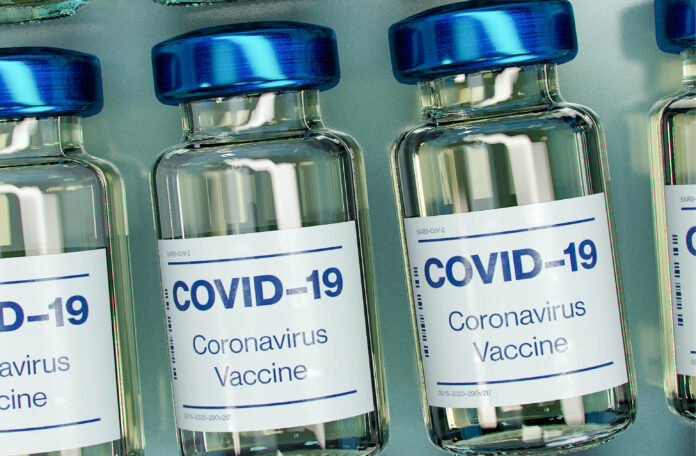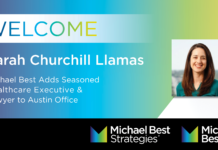
President Biden issued new vaccine and testing mandates. Our colleagues at Michael Best released the following alert providing detailed information on the Biden Administration’s plan. Please contact us with any questions.
On September 9, 2021, President Biden announced the Administration’s “Path Out of the Pandemic” (“Plan”), a six-pronged national strategy to combat COVID-19. The Administration’s Plan places the following obligations on employers and their employees:
- Employers with 100 or more employees must require vaccination or weekly testing;
- Employers with 100 or more employees must provide paid time off for employees to get vaccinated;
- Federal executive branch employees must get vaccinated (there is no option for weekly testing for unvaccinated employees);
- Federal agencies are directed to extend the federal executive employee vaccination requirements to federal contractors;
- CMS to issue in October rules to require health care providers receiving Medicare or Medicaid funding to fully vaccinate employees; and
- The Plan encourages schools to implement vaccination requirements and testing for teachers, staff, and students.
1. Employers with 100 or More Employees. Through a Department of Labor Occupational Safety and Health Administration (“OSHA”) Emergency Temporary Standard (“ETS”), employers with 100 or more employees must ensure their workforce is fully vaccinated or require any unvaccinated workers to produce weekly negative test results before coming to work. The Administration estimates this requirement will impact more than 80 million workers in the private sector.
We hope the ETS provides important guidance and addresses employers concerns. The Plan does not estimate when OSHA will release its rule implementing the President’s requirements. The Plan does not address who must pay for the unvaccinated to get weekly negative test results, including the time to get the negative test results. The Plan does not estimate when this requirement will go into effect or how long employers will be given to prepare. The Plan does not address the level of proof employers will be required to obtain to establish who is vaccinated in the workforce. The Plan references booster shots being available beginning the week of September 20, 2021, but does not address the extent to which the OSHA ETS will include a requirement that all employees get a booster or test negative weekly. Finally, the reference to “before coming to work” suggests the OSHA ETS vaccination requirement will not apply to remote workers.
The Plan directs OSHA to include in its rule a requirement that employers with more than 100 employees provide paid time off for the time it takes for workers to get vaccinated or to recover if they are under the weather post-vaccination. However, it does not indicate whether the paid time off requirement will be in addition to any currently employer-provided paid time off allotment.
2. Executive Branch Employees and Federal Contractors. The President has signed an Executive Order to require all federal executive branch workers to be vaccinated, “subject to exceptions required by law.” The President also signed an Executive Order directing that this standard be extended to employees of many contractors and subcontractors that do business with the federal government. These Orders do not, on their face, allow for employees to remain unvaccinated by providing a weekly negative test result. We will issue a separate alert providing more detail on these federal contractor requirements.
3. Health Care Settings. Health Care Settings. The Plan requires the Centers for Medicare & Medicaid Services (“CMS”) to require COVID-19 vaccinations for workers in most health care settings that receive Medicare or Medicaid reimbursement, including but not limited to hospitals, dialysis facilities, ambulatory surgical settings, and home health agencies. CMS announced today that emergency regulations requiring vaccinations for nursing home workers will be expanded to include hospitals, dialysis facilities, ambulatory surgical settings, and home health agencies, among others, as a condition for participating in the Medicare and Medicaid programs. CMS is developing an Interim Final Rule with Comment Period that will be issued in October.
4. Schools. The Administration’s Plan stops short of mandating the vaccine for teachers and staff of K-12 schools throughout the country. The Plan calls for governors to require vaccinations for teachers and school staff. Currently, nine states, as well as the District of Columbia and Puerto Rico, have vaccination requirements for K-12 school staff, including California, Connecticut, Hawaii, Illinois, New Jersey, New Mexico, New York, Oregon, and Washington. Some cities and school districts are also mandating the vaccine. Building on Administration policies to require vaccination among federal employees, the President affirmatively extends the vaccine mandate to teachers and staff in Head Start programs, and those serving children in Department of Defense- or Bureau of Indian Education-operated schools. The vaccine mandate is seen as the best method of keeping students safe and to provide for in person instruction.
As for students, the President is again recommending the vaccine for those students over 12 years of age but not requiring the vaccine. The Administration also notes that the CDC recommends testing be offered to students not fully vaccinated where there is an elevated spread of the virus. The CDC recommends that teachers and staff who have not been fully vaccinated should be tested regularly regardless of the level of community transmission. HHS and the CDC are to continue to provide assistance to schools to accelerate the establishment of screening testing programs in all schools. Lastly, the President’s Plan notes the FDA currently is undergoing a process to evaluate a vaccine for children under the age of 12, and signals the encouragement of the vaccine for this younger population may be on the horizon.
5. Existing Mask Rules Stay in Place, Without Change. The President’s Plan restates but does not expand current mask mandates at the federal level. Recall that President Biden’s Executive Order, Promoting COVID-19 Safety in Domestic and International Travel, directed applicable agencies to take action to require mask-wearing in airports and on certain modes of public transportation, including on many airplanes, trains, maritime vessels, and intercity bus services. TSA has extended its implementing orders for air and ground travel through January 18, 2022, and the President’s Plan will double fines for those who are not in compliance. The President’s Plan will also ensure that masking requirements remain in place on the other modes of transportation as the country continues to battle COVID-19. Also, President Biden’s Executive Order, Protecting the Federal Workforce and Requiring Mask-Wearing, requires masks and specific physical distancing requirements in federal buildings, on federal lands, on military bases, and other overseas locations, consistent with CDC guidance. President Biden’s Plan will ensure that these requirements remain in place as the nation continues to battle COVID-19.
The Administration’s Plan leaves employers with more questions than answers. We anticipate clarification from OSHA, CMS and the Administration in the days and weeks ahead. We also anticipate legal challenges to the Administration’s Plan and accompanying rules and order. Nonetheless, employees will be asking questions and uncertainty will breed anxiety. Employers would be well advised to evaluate a communication plan with employees and to evaluate what it would take to implement these requirements. Other employers who were considering adopting a vaccine mandate may be convinced now to proceed with a mandate.
Our Michael Best team is here to help. During this time of constant change, in addition to our guidance and counseling, Michael Best is pleased to offer its clients our Vaccination Policy Tool Kit.





